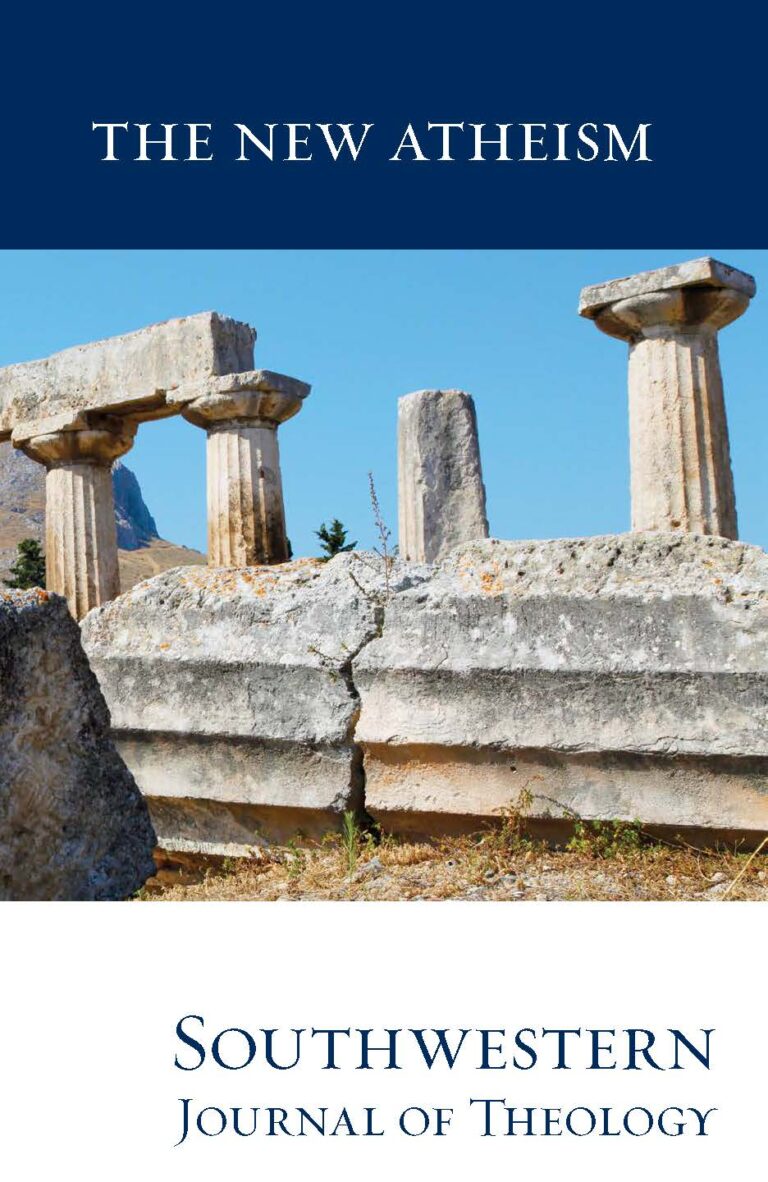
The New Atheism
Southwestern Journal of Theology
Volume 54, No. 1 – Fall 2011
Managing Editor: Malcolm B. Yarnell III
Edited by William Lane Craig and Chad Meister. Downers Grove: IVP, 2009. 272 pages. Softcover, $19.00.
Theism has been attacked over and again throughout human history. Sometimes the attacks are subtle and almost passive in nature. Sometimes the attacks are fierce and draw blood. Within our own day, the new atheists are the latest attack upon theism and faith in general. Thus, God is Great, God is Good was written as a defense of theism against the new atheists’ attacks. Giants of the Christian philosophical and theological world such as William Lane Craig (Professor of Philosophy at Talbot), Alister McGrath (Professor of Theology at King’s College London), Chad Meister (Professor of Philosophy at Bethal College), Michael Murray (Professor of Humanities and Philosophy at Franklin and Marshall), Alvin Plantinga (former Professor of Philosophy at Notre Dame), and more, write to engage the new atheists’ objections to theism head on. Additionally, the editors also include a dialogue between former atheistic philosopher Antony Flew and Christian philosopher Gary Habermas. All rally together to give the Christian thinker answers to the new atheists’ arguments. As the editors note in the introduction “Our primary objective in compiling this book is to answer challenges advanced by the New Atheists and others raising objections to belief in God and the Christian faith” (9).
Within a review such as this, it would be beneficial to explain exactly who these new atheists are. The leaders of the movement are Richard Dawkins, Daniel Dennett, Sam Harris, and Christopher Hitchens (God is Great, God is Good seems to directly counter Hitchens’ book title God Is Not Great). Their “new-ness” has nothing to do with their beliefs about God; after all, atheists have been around for centuries, and though their arguments may vary some, their positions never do. These atheists were first classified “New Atheist” by WIRED magazine. They advance a simple and direct slogan: “No heaven. No hell. Just science” (7). So, it is not their beliefs or arguments that are new; rather, it is the aggressive nature in which they propagate their message—they are direct, combative, belittling, and disseminate their information on a popular level. Essentially, the contributors of God is Great, God is Good explain the new atheists viewpoint as this: one is either an atheistic evolutionist or one is an anti-intellectual that is philosophically and scientifically antiquated.
The book is divided into four parts. Each part takes an issue that is addressed by the new atheists and counters their arguments with sound, theistic arguments. Part 1 focuses on the existence of God. William Lane Craig, J.P. Moreland, and Paul Moser each take a chapter to show that there are valid and sound arguments for God’s existence, and that it is not anti-intellectual or juvenile to believe in a divine, omnipotent Being who created all and sustains all. The overall aim in the section is to give the reader classical arguments which show that being a believer in a supernatural Being is not a sophistical or juvenile ideology, but is logical and coherent to sound philosophical and scientific reasoning.
Part 2 tackles issues in philosophy of science. John Polkinghorne, Michael J. Behe, and Michael J. Murray use the fine-tuning argument to show the necessity of there being a God. The fine-tuning argument states, simplistically, that life within the universe can only exist within precise (finely tuned) and exact characteristics; so precise and exact that it must have been created by an Intelligent Designer. In other words, the parameters of existence are so narrow that the best explanation of such a universe is an Intelligent Designer.
Part 3 addresses one of the oldest and best arguments against theism—the problem of evil. Chad Meister, Alister McGrath, Paul Copan, and Jerry L. Walls show that God is omnibenevolent, omnipotent, and omniscient—yet, evil still exists. Chad Meister writes, “There is no logical contradiction between the two claims (that evil exists and God exists), for it could be the case that an all-powerful, all-knowing, and omnibenevolent God has good reason for allowing evil to exist and persist— perhaps, for example, for the greater good of one or more persons” (108). The authors highlight the moral argument for the existence of God; it makes no logical sense to claim God does not exist and claim that evil exists. Moral objectivism can only be true, the contributors reason, if there is a moral Law-Giver.
Part 4 focuses specifically on Christian belief. The section submits that the arguments against theism affect Christianity directly. Charles Taliaferro, Scot McKnight, Gary Habermas, and Mark Mittelberg show that the belief in Christ and his work is not an outdated stance that should be relegated to the Medieval era, but rather Christ’s work and life is historically verifiable and spiritually necessary. Additionally, the authors explain that special revelation is needed for one to know God personally.
God is Great, God is Good is a book written on a popular level. One does not need a philosophical background to understand the essays or arguments. Granted, the book is written for an educated crowd, but one need not have a degree in philosophy, biology, physics, or theology to understand the depth and precision of the arguments. The authors do a stellar job at making their essays readable and beneficial to modern theist. My only complaint is one does not get to see the new atheists’ response.





